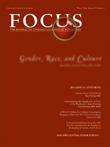Nonpharmacologic Interventions for Inappropriate Behaviors in Dementia: A Review, Summary, and Critique
Abstract
Inappropriate behaviors are very common in dementia and impose an enormous toll both emotionally and financially. Three main psychosocial theoretical models have generally been utilized to explain inappropriate behaviors in dementia: the “unmet needs” model, a behavioral/learning model, and an environmental vulnerability/reduced stress-threshold model. A literature search yielded 83 nonpharma- cological intervention studies, which utilized the following categories of interventions: sensory, social contact (real or simulated), behavior therapy, staff training, structured activities, environmental interventions, medical/nursing care interventions, and combination therapies. The majority are reported to have a positive, albeit not always significant, impact. Better matching of the available interventions to patients’ needs and capabilities may result in greater benefits to patients and their caregivers.



